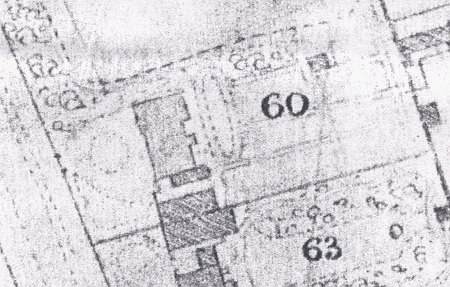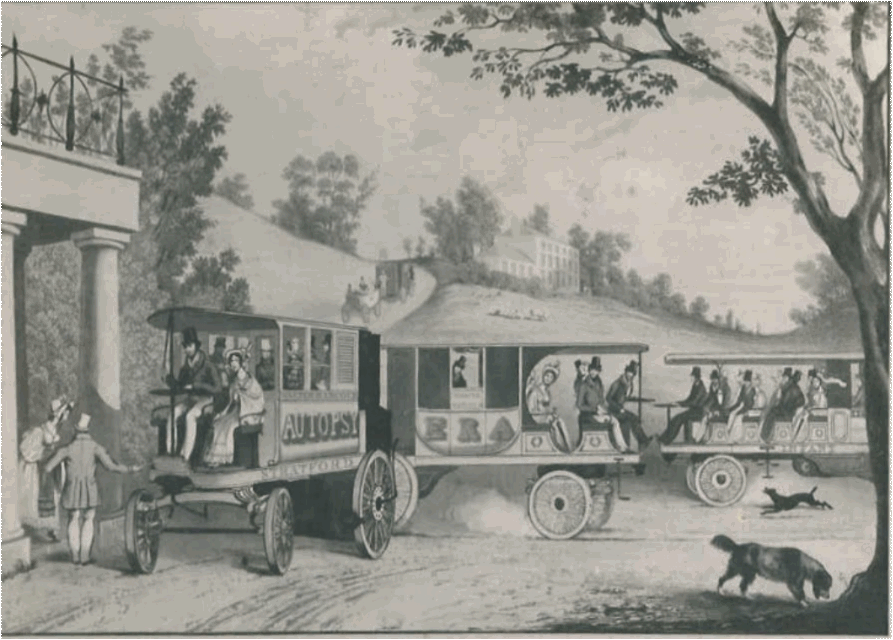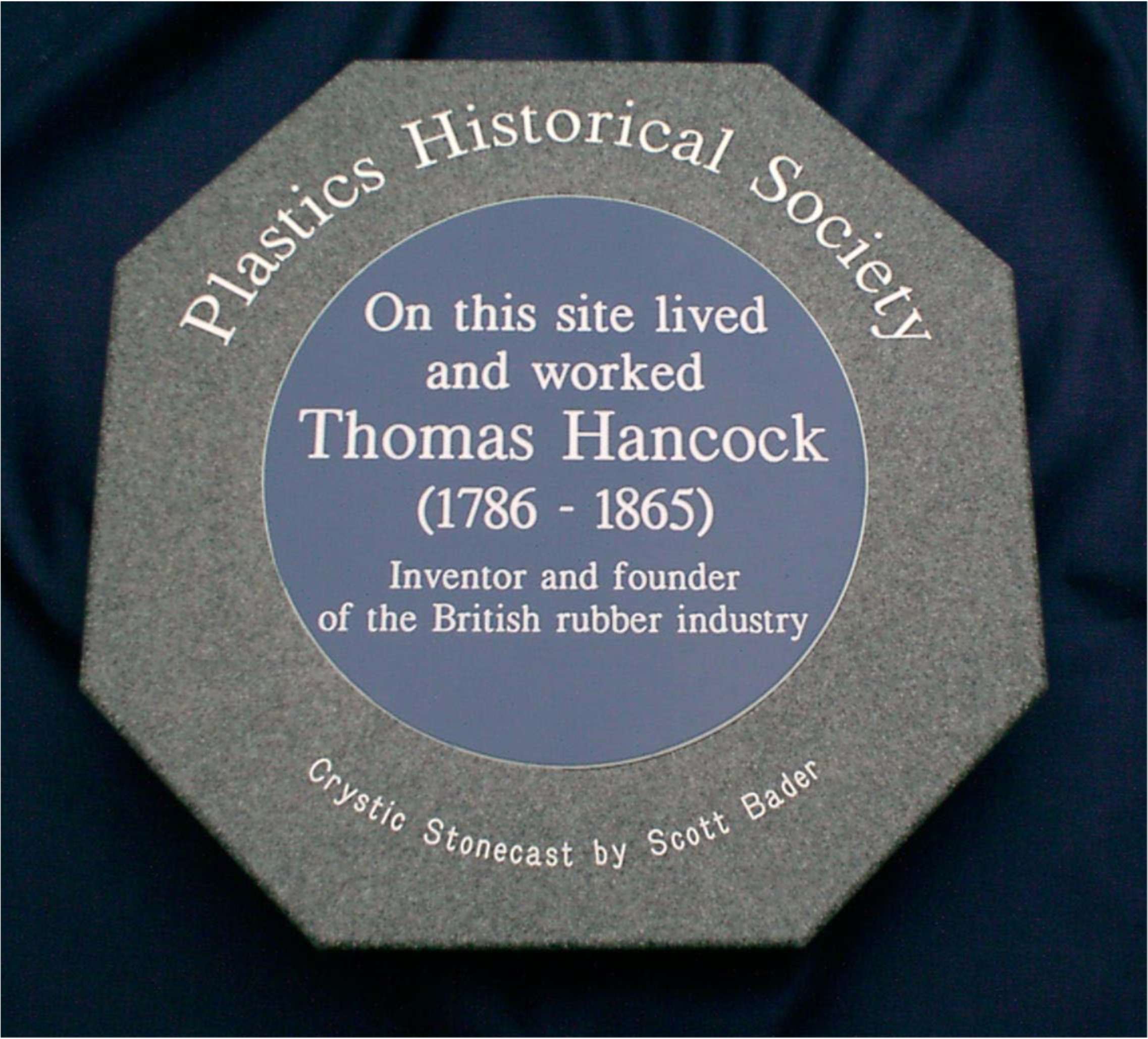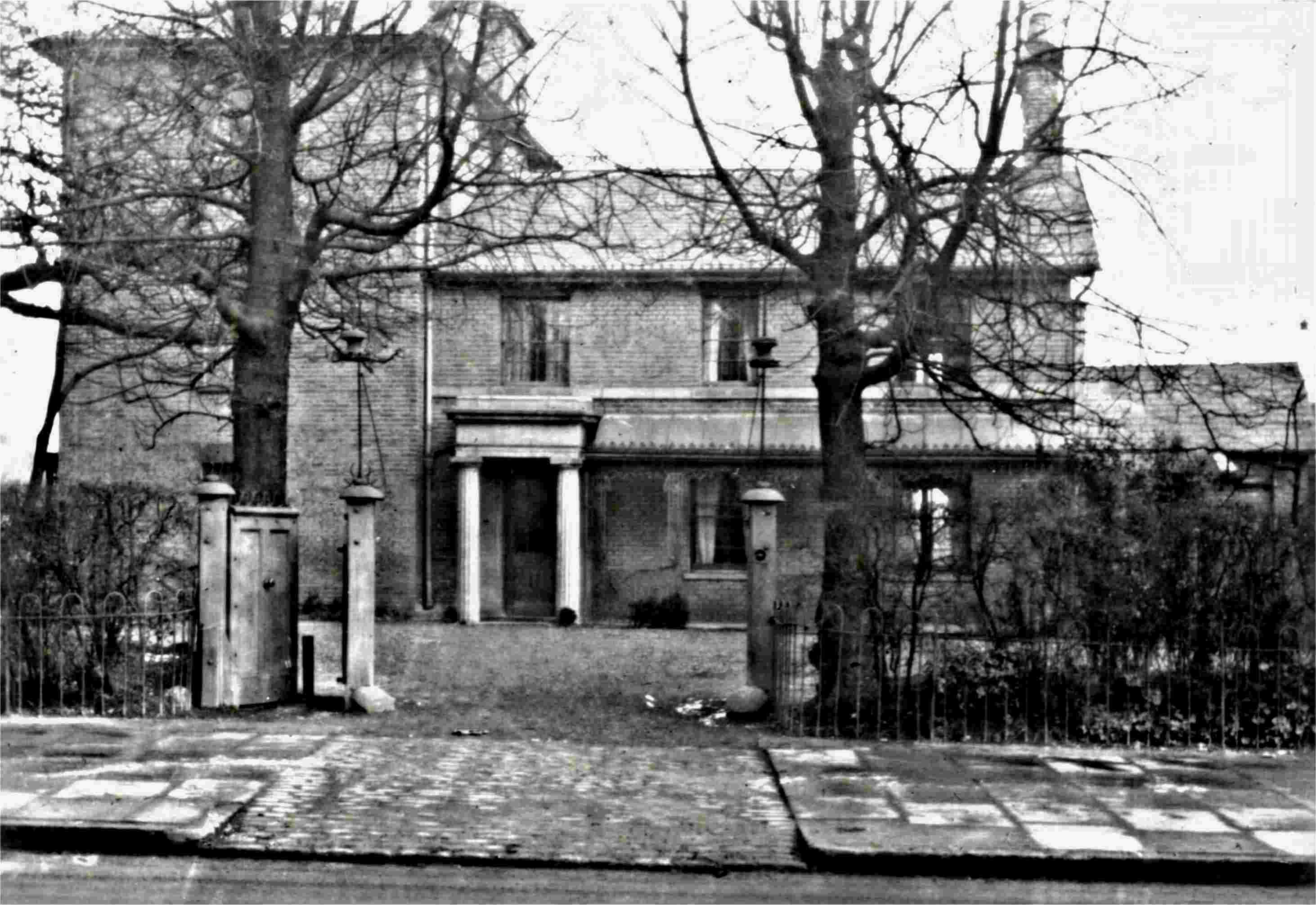| Home
> Serendipity >
Marlborough Cottage and Thomas
Hancock
We do not know when
Thomas Hancock
moved to moved to Marlborough Cottage, Green Lanes N4
but it was
probably soon after he arrived in London and probably between
1815 and
1819. He died there on March 26th 1865. Unfortunately
Hackney Archives Department has not been able to identify ‘Marlborough
Cottage’ so where did he live?
Update 2008. Recent studies have shown
the statement in red above to be incorrect. Maps showing the
development of Stoke Newington make it clear that Marlborough
Cottage could not have been built before the middle 1820's. In
fact the first record in 'official' papers relating to it
suggest it was only built around 1840. However the Hancock
family archives contain an insurance policy on the property
dated late 1836. It must have been a new build at that time,
probably incorporating design modifications suggested by Thomas
such as the private staircase between his laboratory and bedroom
mentioned below. The date corresponds with Thomas taking
responsibility for the upbringing of his brother's children
after John died in 1835.
 |
|
Tithe map of the northern end of Green
Lanes, Stoke Newington. Related documents
show Thomas Hancock to be in possession of three plots with
No.60 containing his house. |
Census records of 1851 show Thomas, together
with four neices (sic), Frances, Harriet, Catherine and Mary
Ann, two nephews, Thomas and Francis, a ‘general servant’ and a
gardener all living at 82 Green Lanes. Thomas Hancock was born
in Marlborough and his occupation was given as ‘Caoutchouc
manufacturer’. This is the man we want but where was no. 82?
Certainly not where that number is today. Fortunately the
archives do have a tithe map of that area dated 1848 and here we
can find Thomas in possession of a large house (land reference
60) with a circular carriageway entering the grounds through a
central pair of pillars, a formal garden and two meadows, one to
the north and one to the east running towards New River and the
reservoir. In total the holding was about 3.5 acres.
 |
|
This second illustration is believed to show
some of the steam carriages manufactured by Thomas’ brother,
Walter, drawn up on the carriageway in front of the house,
known by the family as Marlborough Cottage |
Walter should also be remembered in the
story of the birth of Britain’s rubber industry as not only was
he a pioneer of the steam road carriage industry, he also built
Thomas’ first masticator (or pickle) and later enlarged it and
adapted it to be driven by steam at both the Hancock factory in
Goswell Road and also in the Chas. Macintosh & Co. factory in
Birmingham. Indeed, all the Hancock brothers contributed
significantly to the history of this industry.
John developed a successful rubber and gutta
percha surgical goods business using process and manufacturing
equipment built by Walter but died in 1835 of consumption.
His nine children then moved to their uncle’s house,
Marlborough Cottage.
Charles founded the ‘Gutta Percha and India
Rubber Company’ which, inter alia, manufactured the first
telegraph cable coated with gutta percha, again using a machine
designed and built by the engineer of the family – Walter.
Charles died in 1877 and Walter in 1852.
The eldest brother, James, married Elizabeth
Lyne who duly gave birth in 1815 to James Lyne Hancock, to whom
Thomas transferred his business in 1842 and who ran it until his
death in 1884 when it passed to Thomas’ grand-nephew, John
Hancock Nunn.
To return to the story of Marlborough
Cottage. For a more detailed picture of the house we are
indebted to a memoir, as yet unpublished, which was written by
the great great nephew of Thomas, the Revd. J.L.B James,
and also to his son, Frank, for
providing me with a copy and allowing me to quote from it.
Writing of his visits to the ‘cottage’ as a
schoolboy in the late 19th century his beautiful and
emotive description of the property matches in every detail
those gleaned from the tithe map but of particular interest to
the rubber historian is his description of Thomas’ laboratory:
"To the left of the front door were the ‘iron-door room’ and the
drawing room. The former gained its name from the corrugated
metal door painted in oak graining. This room was of some
interest, it was the laboratory of Thomas Hancock, the friend of
Faraday and the partner of Charles Macintosh: it was in this
room that he discovered the process of vulcanizing India-rubber.
It remained exactly as it had been at the time of his death in
1865. From this room a private staircase ascended to his
bedroom, and as the idea for the crucial experiment occurred to
him whilst he was in bed, he came down at once, made the
experiment and thus came about one of the great discoveries of
the world".
After Thomas’ death, three of his nieces
remained unmarried and in residence, the eldest, Maria (who was
not present at the time of the ’51 census), Frances and Harriet.
They continued the life of early Victorian ladies through
Frances’ death in 1895, Maria’s in 1902 until Harriet’s demise
in 1909.
The house then became empty and remained
unoccupied until its demolition in 1945. Perhaps its last claim
to fame was that in the adjacent meadow to the north a V2 rocket
landed on January 10th 1945. It took the life of only
one person but must have considerably shaken the old building.
After its demolition the London County Council built a block of
flats on the site - Banstead Court.
 |
|
|
On
October 8th 2003 the Plastics Historical Society placed a
plaque on Banstead Court to celebrate the life and work of
Thomas Hancock. It was unveiled by one of the four great
great great nephews/nieces of Thomas (who never married) who
attended the ceremony. |
|
Sources for much of this document were Ted
Rogers at Hackney archives and Thomas Hancock’s descendents,
David Eustace and Frank James. Their help has been invaluable
and is acknowledged with appreciation.
 |
|
Since this 'chapter'
was written, a picture of Marlborough Cottage has been
discovered and is reproduced here |
|
|